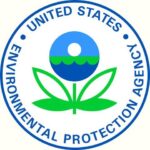In today’s regulatory environment, companies must be proactive in addressing environmental and safety concerns. A third-party hotline encourages disclosure of critical issues and protects both the company and its employees.
Voluntary Protection Program Act
 OSHA’s Voluntary Protection Program Act is garnering support from both political parties. Introduced on April 28, the proposed legislation would signify a long-term commitment to OSHA’s program recognizing exceptional worksite in terms of safety and health performance. Worksites that successfully participate in VPP are exempt from certain OSHA inspections.
OSHA’s Voluntary Protection Program Act is garnering support from both political parties. Introduced on April 28, the proposed legislation would signify a long-term commitment to OSHA’s program recognizing exceptional worksite in terms of safety and health performance. Worksites that successfully participate in VPP are exempt from certain OSHA inspections.
Sens. Michael Bennett (D-CO) Mike Enzi (R-WY) are partnering in introducing the legislation. Enzi said in a press release: “It is important that Congress cement this successful program to help ensure that it persists, as well as to ensure that it can grow to include more of America’s small businesses.” Bennett said “Our bill ensures that OSHA can continue to use this successful and cost-effective program to ensure the health and safety of Colorado workers.”
Since its 1982 inception, over 2,200 worksites have participated in VPP; the VPP Act would codify the program and secure funding against Congress. At this writing the bill is still before the Senate’s Health, Education, Labor and Pensions Committee.
EPA Initiatives
 For the first time since 2011, the United States Environmental Protection Agency will update its initiatives starting in October. The newly selected national enforcement initiatives will guide inspection and enforcement resources for the next three years.
For the first time since 2011, the United States Environmental Protection Agency will update its initiatives starting in October. The newly selected national enforcement initiatives will guide inspection and enforcement resources for the next three years.
The EPA will also increase focus on metals manufacturing, mining, chemical manufacturing, and food processing industries. Increased inspections for facilities under the Clean Air Act are planned, especially where there is a risk of catastrophic releases. Industrial facilities with substantial air emissions and large agricultural facilities are also in line for an expanded EPA focus.
The EPA’s limited enforcement budget makes this announcement noteworthy. Between FY2010 and FY2015 there was a 20% budget decrease. With that tight budget, the EPA’s top priority will switch to larger, complex cases. While this strategy entails fewer cases for the EPA to pursue, the conclusion is it will provide greater environmental and health gains.
Within this structure, the EPA’s attention will continue in focused priorities at facilities: expand targeting toxic air pollution emissions for storage of hazardous waste; ensure large industrial facilities comply with the Clean Air Act; examine energy extraction activities; pursue unpermitted raw sewage discharges; target concentrated animal feeding operations that hinder natural resources.
To compensate for reduced physical inspections and limited enforcement resources, the EPA plans to better engage technologies to gather information about compliance at facilities.
News
Show Low fire district manager indicted in $1.8M embezzlement case
Emmaus shooting range faces $135K in OSHA fines
EEOC sues Mobile Destination, Inc. for disability discrimination
For more information about Red Flag Reporting, the third-party hotline offered by Dean Dorton, please contact Nick Lynch at nlynch@deandorton.com or 859.425.7635.








